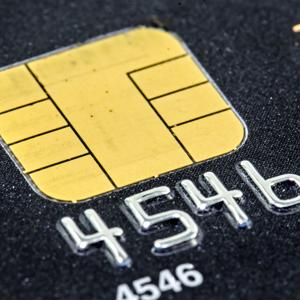What retailers need to know about the switch to EMV

The U.S. rollout of EMV chip cards continues as merchants contemplate upgrades to their card acceptance technology when conducting in-person transactions.
The EMV "liability shift" that began October 1, 2015 places the liability for card-present fraud onto whichever party is the least EMV-compliant in a fraudulent transaction. In plain English, that means that as long as a customer has an EMV card, it is the retailer's responsibility to provide the point of sale (POS) terminal to take advantage of the added security of the chip. If they do not, they would be considered at fault if a counterfeit card is used that the new technology would have been able to detect and prevent.
Here are a few reasons merchants might want to consider being an early adopter of EMV:
- You don't know your customers well. Accepting EMV payments gives you an added layer of security against fraud. However, if the nature of your business means you know customers very well or that most of your customers are "regulars," rushing to implement EMV is less important.
- You are at a high risk of being targeted for fraud. If you work in an industry that has a high level of fraud or if you feel you will become a criminal target based on the value of what you sell, then you need to adopt EMV early. However, if you don't currently get many chargebacks due to counterfeit card activity, there is no reason to believe that you will see any immediate increase after the liability shift.
- You want to accept contactless payments like Apple Pay and Samsung Pay. Contactless chip card acceptance is being rolled out along with EMV in new terminals.
While the changeover has proven to be a bit of an inconvenience for merchants and customers alike, it is providing a long-needed update to magnetic stripe cards that have been known to put their users at risk of fraud. EMV transactions utilize a small computer chip embedded in the card instead of easy-to-clone stripes to create a one-time transaction code that is much more difficult to duplicate. Instead of swiping these cards, users will instead "dip" their new plastic into a slot in the POS terminal. The card then must stay in the terminal until the transaction is complete.
The new chip cards are still being issued with magnetic stripes on the back, however, so that retailers who have not yet updated their POS systems to accept EMV cards are not left without a way to process payments. Swipes on EMV enabled terminals will simply be rejected, as the magnetic stripe tells the terminal it also contains a chip. This way new cards help ensure the highest percentage of EMV-processed transactions possible on up-to-date systems.
However, while trading the swipe for a dip, the most common EMV card verification method continues to rely on a signature, rather than a PIN (as the old term "chip-and-pin card" would have you think). The reasoning? While better than a signature for confirming one's association with the card, repeatedly punching in the same PIN that activates the card at an ATM opens users up to eavesdropping and theft far more than reserving the PIN for ATM transactions. Sticking with a signature also has its logistical benefits, easing cardholders who are accustomed to signing into EMV one change at a time. On top of that, requiring encrypted PIN Pads adds an even greater burden of hardware expense to merchants.
To learn more about EMV visit www.vantagecard.com/emv or contact [email protected] with specific questions.
Vantage has several EMV terminal solutions to choose from. Visit our website to learn more about our payment technology services and solutions!